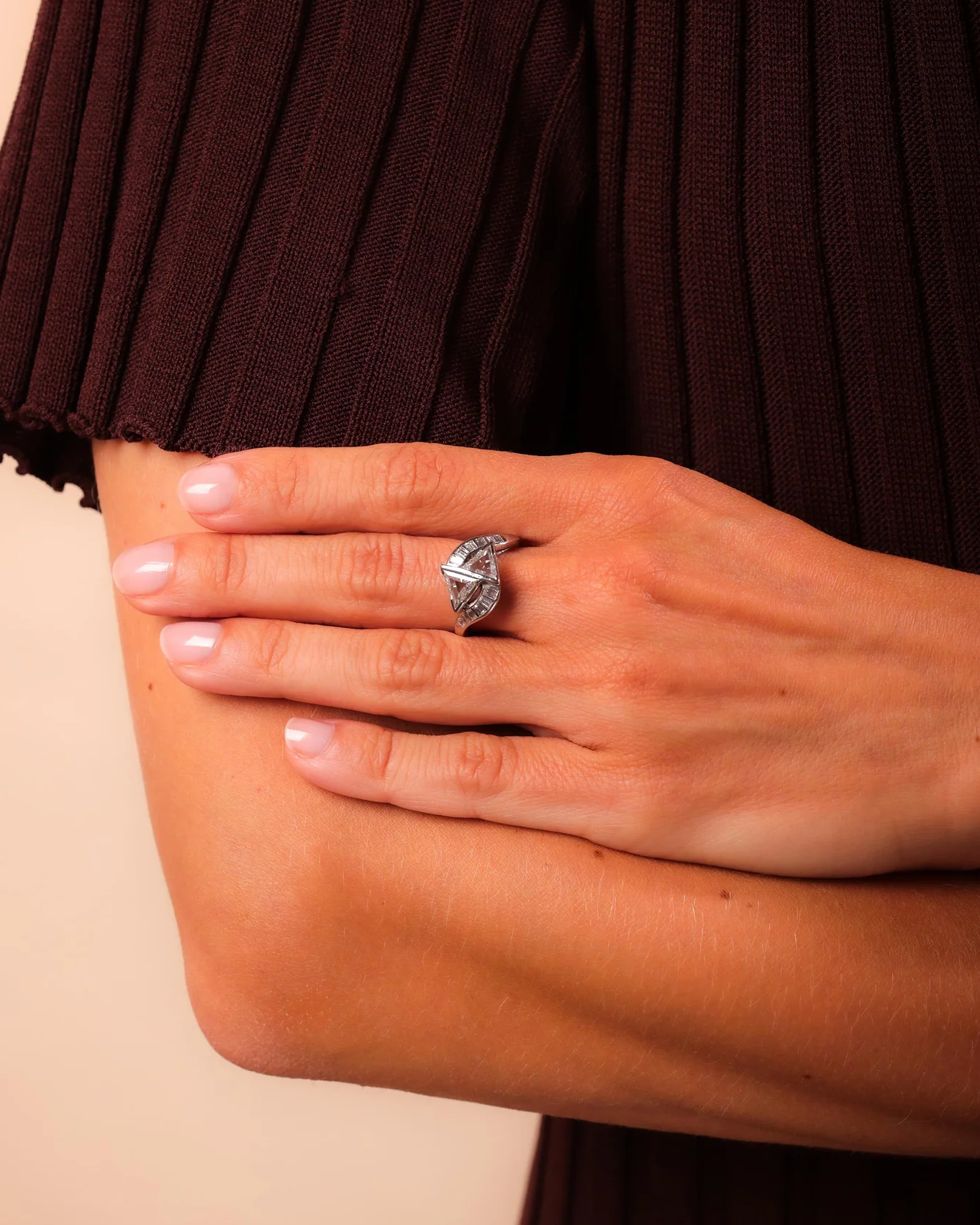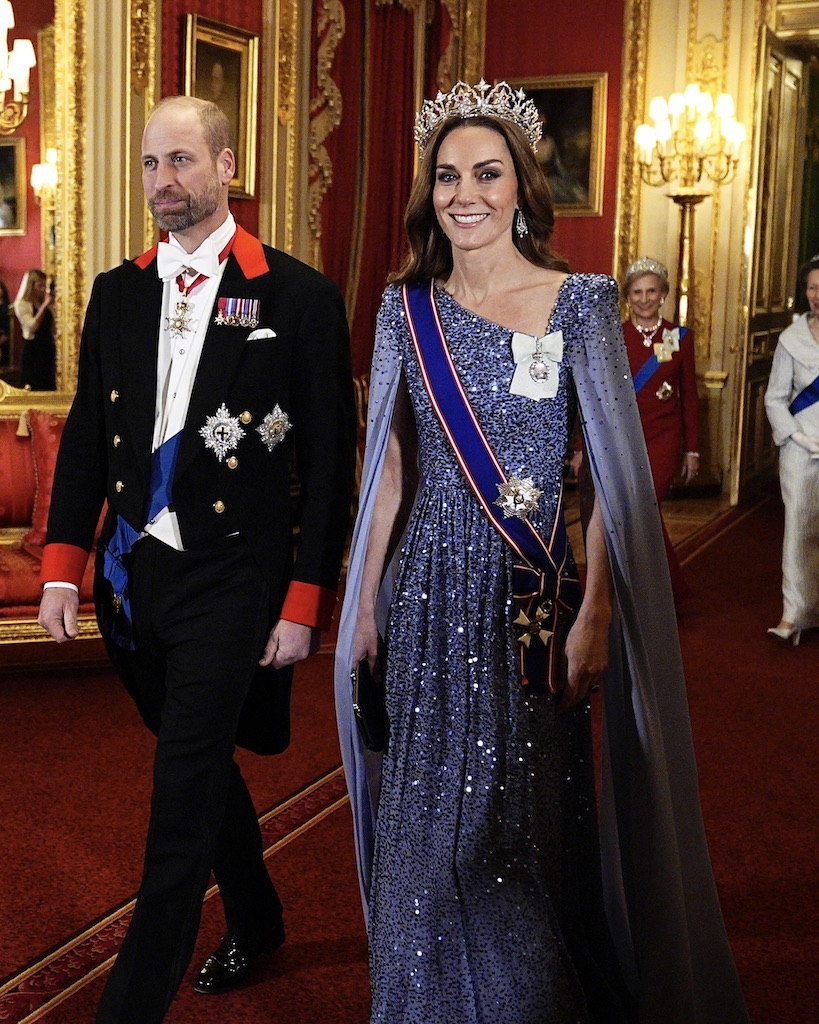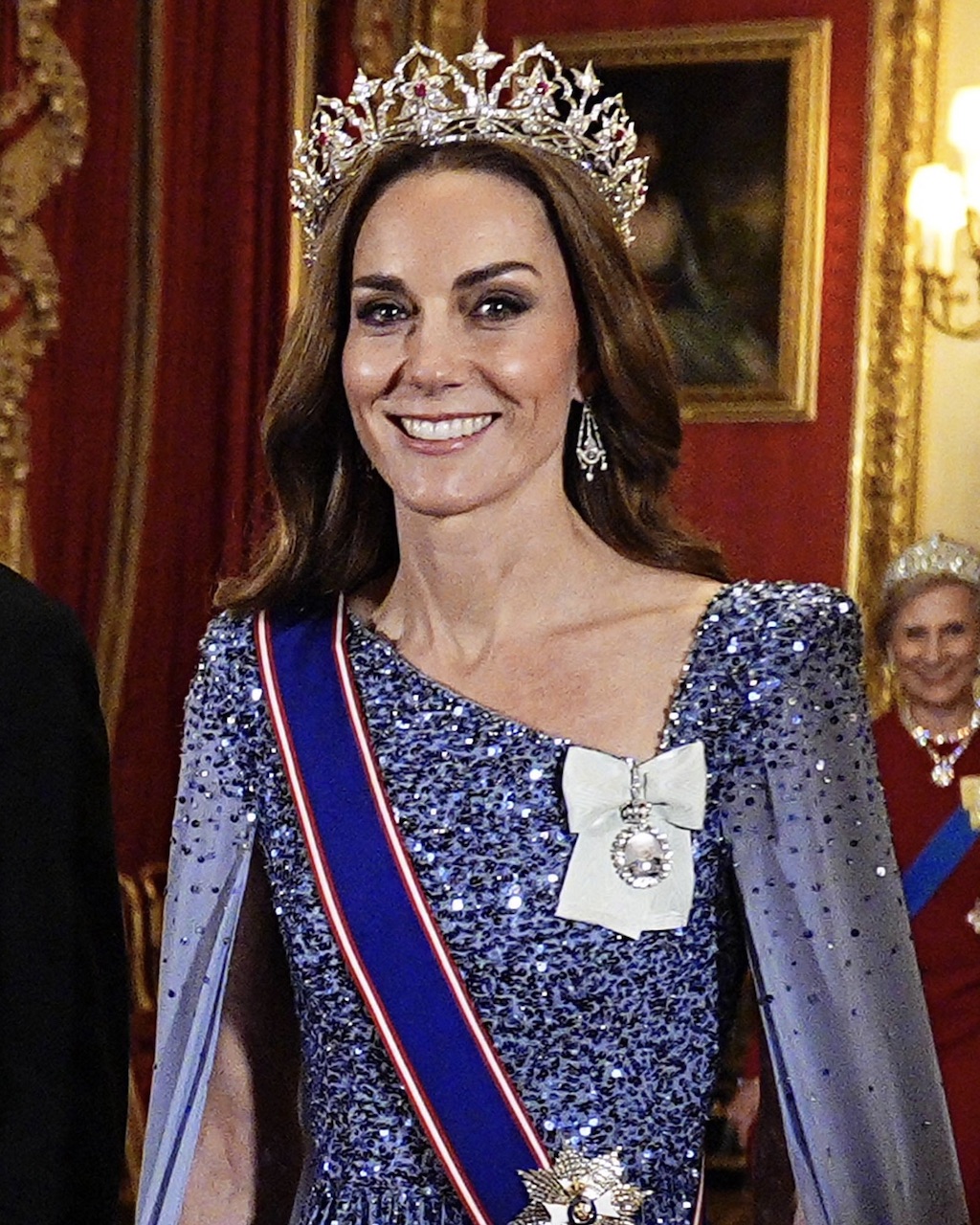< Historic Diamonds / Auctions
Napoleon’s Diamond Brooch Sold for $4.4 Million at Auction
Napoleon Bonaparte’s diamond brooch, seized after his defeat at the Battle of Waterloo, dazzled at Sotheby’s Royal & Noble Jewels Sale in Geneva, fetching 22 times its estimate.
Updated: November 12, 2025
Written by: Meredith Lepore

Historic French jewels are having quite a moment! A stunning brooch featuring old mine-cut diamonds, once owned by Napoleon Bonaparte, sold for $4.4 million at Sotheby’s Royal & Noble Jewels Sale in Geneva—a staggering 22 times its original estimate of $150,000 to $250,000.
Measuring approximately 45 millimeters across, the rare circular diamond brooch features a magnificent 13.04-carat oval diamond at its center, encircled by nearly one hundred glittering old mine-cut diamonds.
French jewels have been in the spotlight lately, with headlines dominated by last week’s daring heist of priceless diamond treasures from the Louvre’s Galerie d’Apollon. In brighter news, attention now turns to a spectacular piece with a storied past—Napoleon’s diamond brooch, which continues to prove that history’s greatest treasures never lose their shine.
Ahead, discover the remarkable history behind Napoleon’s diamond brooch.
Meet the Expert

- Tobias Kormind is a seasoned diamond expert with over 20 years of experience in the fine jewelry industry.
- He is co-founder and Managing Director of 77 Diamonds, one of Europe’s most prominent online diamond jewelers, offering access to approximately 80% of the world’s diamonds through a direct-to-consumer model.
Napoleon’s Diamond Brooch: A Lost Treasure
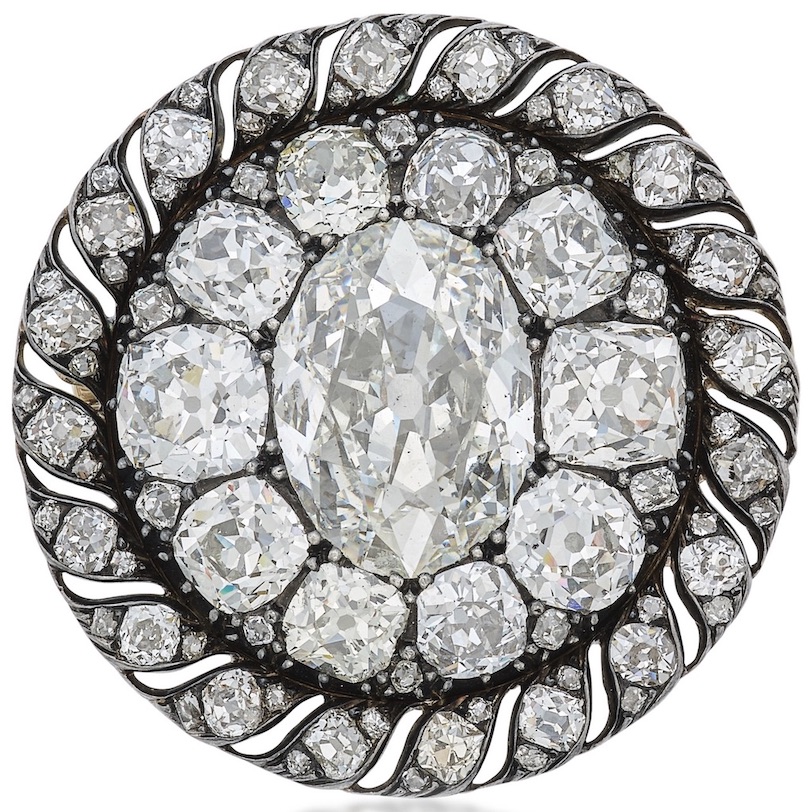
Created in 1810, this remarkable brooch was originally designed for courtly occasions during the height of Napoleon’s reign. Its story, however, took a dramatic turn in 1815, when Napoleon was forced into a crushing defeat at the Battle of Waterloo. As the French Emperor fled the battlefield, the jewel was seized by the advancing Prussian army—a glittering spoil of war that symbolized the end of his imperial ambitions.
Now resurfacing in the public eye, Napoleon’s diamond brooch carries with it the memory of Waterloo, a battle that redrew the map of Europe and brought Napoleon’s reign to a definitive close.
“A result worthy of its legend. Given the recent Louvre heist and the provenance of arguably the most famous French figure in history, I’m not surprised the jewel achieved a majestic CHF 3.5m ($4.4m),” Tobias Kormind, Managing Director of 77 Diamonds, says. “The brooch arrives at a moment of renewed global fascination with Napoleonic jewels, and its story is irresistible – the jewel is believed to have been abandoned in Napoleon’s carriage during his hasty retreat after losing the Battle of Waterloo, an event that reshaped Europe.”
Napoleon’s Diamond Brooch Was Seized by the Prussians After Waterloo

The brooch was just one of a few of Napoleon’s personal effects stolen by the Prussians.
They also seized medals, weapons, silverware, a hat, as well as a jewelry box filled with loose diamonds and other jewels. In the chaos of his army’s defeat and his hurried flight, Napoleon abandoned several carriages stuck in the muddy roads, including the one holding these exquisite items.
The abandoned treasures were soon offered to Prussian King Friedrich Wilhelm as battle trophies following the French defeat at Waterloo. Once in the king’s possession, the brooch entered the Prussian royal collections, where it is believed to have remained for much of the 19th century. Napoleon’s diamond brooch remained in the House of Hohenzollern for centuries, passing from King Friedrich Wilhelm III to successive German emperors before eventually moving to a private collection.
The Historical Importance Behind Napoleon’s Diamond Brooch

Napoleon’s diamond brooch carries profound historical weight.
The 13.04-carat oval diamond at its heart is not merely a dazzling stone, but a symbol of imperial grandeur, created to embody the authority and magnificence of the world’s most famous Emperor. Its capture by the Prussian army after Napoleon’s crushing defeat at Waterloo transformed the jewel into something more than an ornament: it became a tangible marker of a seismic shift in European power. In a single moment, the glittering symbol of an empire was turned into a trophy of conquest.
The brooch has, quite literally, borne witness to the rise and fall of Napoleon—a man whose military genius and political ambition reshaped the continent. Like the storied French Crown Jewels, it encapsulates a legacy of opulence, power, and intrigue. But beyond that, it reminds us of jewelry’s ability to embody history itself, serving as a direct and enduring link to one of the most influential figures the modern world has ever known.
Other Jewels Included in the Royal & Noble Sale
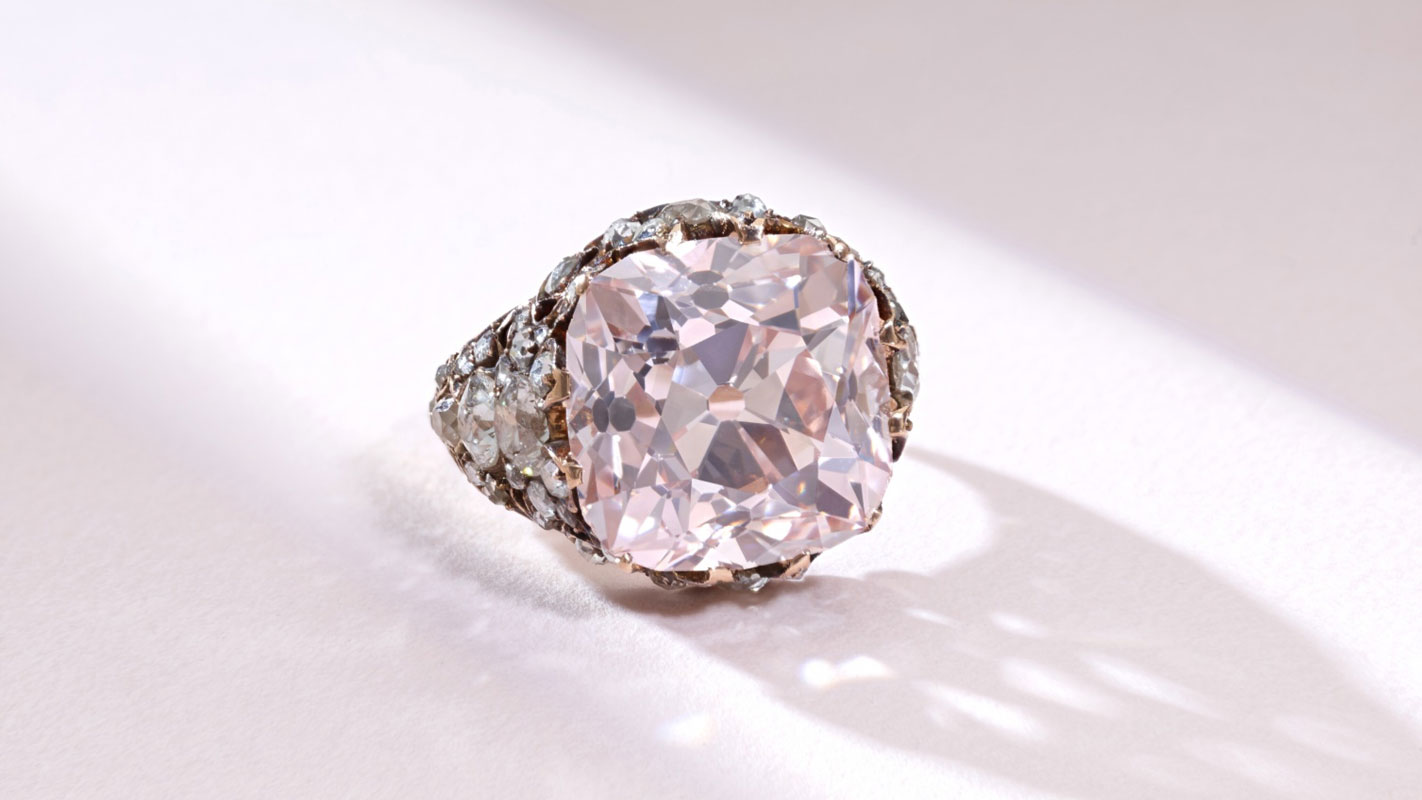
Two standout lots in the auction also highlight the Old World aristocracy. One is a natural pearl and diamond hair ornament that once belonged to Cunegonde of Saxony, a duchess of royal lineage whose jewels reflected the refinement and grandeur of 18th-century European courts. It combines luminous natural pearls with diamonds and carries an estimate of $340,000–$500,000.
The other is a rare 13-carat light pink diamond ring from Princess Neslishah Sultan, one of the last Ottoman princesses and a direct descendant of both the Ottoman sultans and Egypt’s last khedive. Known for her elegance and for bridging two fading empires, Neslishah’s jewels are coveted pieces of royal heritage. This exceptional ring, valued at $240,000–$400,000, represents not only remarkable gemological rarity but also the final chapter of a dynasty that once ruled vast parts of Europe, Asia, and Africa.
The Future of Napoleon’s Diamond Brooch
The sale of Napoleon’s diamond brooch marks more than just a record-shattering moment—it’s a reminder of how history, legacy, and craftsmanship continue to captivate collectors centuries later. While Sotheby’s has not disclosed the buyer, the jewel’s journey is far from over. “With several historic pieces now missing, collectors have become even more focused on jewels with clear, secure provenance, and the buyer has walked away with an exciting piece of history tied directly to one of Europe’s most dramatic eras,” Kormind says.



